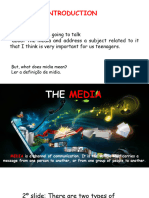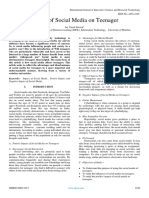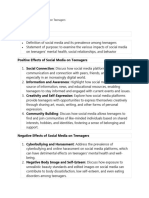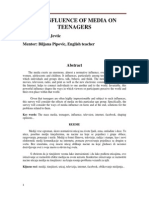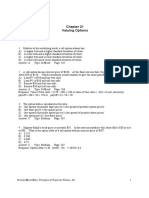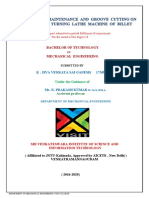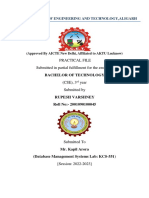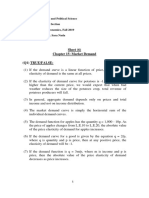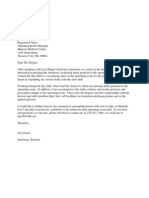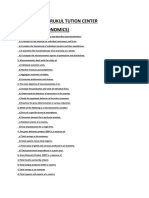0% found this document useful (0 votes)
19 views8 pagesMedia and Its Impact On Teenagers
The document explores the impact of media on teenagers, highlighting both its positive effects, such as increased awareness and educational benefits, and negative consequences, including addiction and cyberbullying. It emphasizes the role of social media in teen life and presents survey data reflecting teenagers' experiences with media. The conclusion advocates for a balanced media diet and parental guidance to ensure media is used for personal growth rather than harm.
Uploaded by
kumkum bafnaCopyright
© © All Rights Reserved
We take content rights seriously. If you suspect this is your content, claim it here.
Available Formats
Download as DOCX, PDF, TXT or read online on Scribd
0% found this document useful (0 votes)
19 views8 pagesMedia and Its Impact On Teenagers
The document explores the impact of media on teenagers, highlighting both its positive effects, such as increased awareness and educational benefits, and negative consequences, including addiction and cyberbullying. It emphasizes the role of social media in teen life and presents survey data reflecting teenagers' experiences with media. The conclusion advocates for a balanced media diet and parental guidance to ensure media is used for personal growth rather than harm.
Uploaded by
kumkum bafnaCopyright
© © All Rights Reserved
We take content rights seriously. If you suspect this is your content, claim it here.
Available Formats
Download as DOCX, PDF, TXT or read online on Scribd
/ 8













